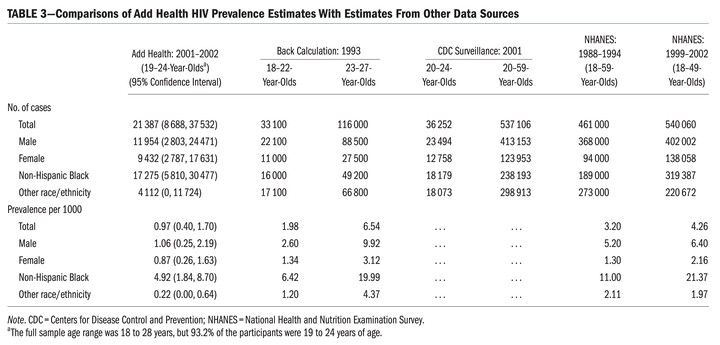Prevalence of HIV Infection Among Young Adults In The U.S.: Results From The Add Health Study

Abstract
Objectives: We estimated HIV prevalence rates among young adults in the United States.
Methods: We used survey data from the third wave of the National Longitudinal Study of Adolescent Health, a random sample of nearly 19000 young adults initiated in 1994–1995. Consenting respondents were screened for the presence of antibodies to HIV-1 in oral mucosal transudate specimens. We calculated prevalence rates, accounting for survey design, response rates, and test performance.
Results: Among the 13184 participants, the HIV prevalence rate was 1.0 per 1000 (95% confidence interval [CI] = 0.4, 1.7). Gender-specific prevalence rates were similar, but rates differed markedly between non-Hispanic Blacks (4.9 per 1000; 95% CI = 1.8, 8.7) and members of other racial/ethnic groups (0.22 per 1000; 95% CI = 0.00, 0.64).
Conclusions: Racial disparities in HIV in the United States are established early in the life span, and our data suggest that 15% to 30% of all cases of HIV occur among individuals younger than 25 years. (Am J Public Health.2006; 96:1091–1097. doi:10.2105/AJPH.2004.054759)